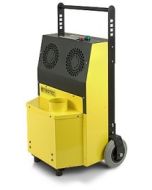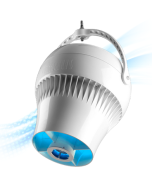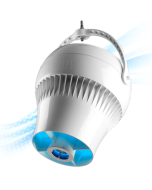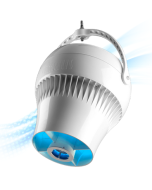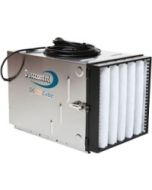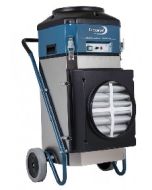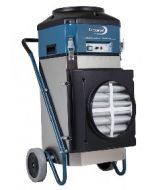Background to Indoor Air Pollution Sources
The air in our offices and homes is usually far more dirty and contaminated with biological and chemical contaminants than the air outside. The reason for this is twofold, firstly there are numerous indoor air pollution sources, and secondly the pollutants, once air borne are neither treated or ventilated properly, and the net effect is an increasing concentration of pollutants on our indoor air.
Key facts about Indoor Air Pollution Sources
- The EPA in America says most indoor air has 2 - 10 times higher concentrations of harmful pollutants than outdoor air. Some organisations have reported inside pollution levels up to 100 times that found outside.
- The air indoors is the No. 1 environmental health risk.
- No building is immune to indoor air quality problems - homes are filled with prime sources of airborne allergens and contaminants
- The American College of Allergists says that 50% of all illness is either caused by or aggravated by indoor air contaminants
Categories of Indoor Air Pollution Sources
| Chemical contaminants including -
|  | Odours including -
|
Dust | Dusts including -
|  | General biological contaminants -
|
Room by Room Indoor Air Pollution Sources
To get a feel for where there pollutants are coming from lets consider some of the various problems areas...
Bathroom
- Moisture encourages bacteria and mould growth
- Aerosol products release harmful gases
- Off gassing from cosmetics and cleaning agents
- Flushing of toilet releases airborne droplets containing bacteria
Bedroom
- Chemical fumes released from dry cleaned clothes and cosmetics
- Dust mites exist everywhere but often concentrate in bed linen
Garage Exhaust from cars and other engines remain in air for long periods of time
- Fumes from stored gas cans paint, solvents, cleaning materials, pesticides and chemicals
Shed
- Solvents, paints, adhesives, epoxy etc. release harmful gases
- Dusts from wood working, cement and power tools can trigger respiratory problems.
Kitchen
- Household cleaners release unhealthy vapours
- Moisture encourages bacteria and mould growth
- Pressed wood cabinets are a source of formaldehyde and other fumes
Living Area
- Fireplaces, stoves and tobacco products produce combustion pollutants and harmful particulates
- Carpets, curtains, furnishings paneling and laminated materials all 'off gas' toxic fumes
- Pets leave allergens such as dander, feathers, or skin.
The interesting thing about the list above is that it makes no mention of perhaps the two most obvious sources of indoor air pollution;
- dust which is ambient ground level particulate that is picked up by small air currents as we move in out and around buildings. Every time we walk though a door we bring in pollutants and dust.
- Traffic fumes and dust particularly where the building is close to a main road.
Outside air with plenty of wind, rain, and sun is constantly moving, self-cleaning and self purifying. Inside air, by contrast, is not. The key reason that these pollutants stay inside is because increasingly our buildings are sealed, and poorly ventilated, so pollutants build up with no release to outside. Great for energy efficiency but a potential problem for the health of the occupants.
The key principles of controlling indoor air pollution
- Minimise the indoor air pollution sources.
- Ensure that the building is properly ventilated. This does not necessarily mean supply and extract to each room but certainly supply to some room and extract from others. The idea here is that air is allowed to transfer room to room, and that fresh air is supplied to the room with least indoor pollutants sources and extracted from rooms with most sources. Extract air from kitchens and bathrooms.
- To prevent high heat energy loss use heat exchangers so that warm exhaust air pre-warms clean fresh air entering the building.
- If having completed steps 1, 2 and 3, you still have a problem consider using air cleaners and/or air purifiers.
- If step 2 and 3 are too difficult or expensive to do, then consider using air cleaners and/or air purifiers.



